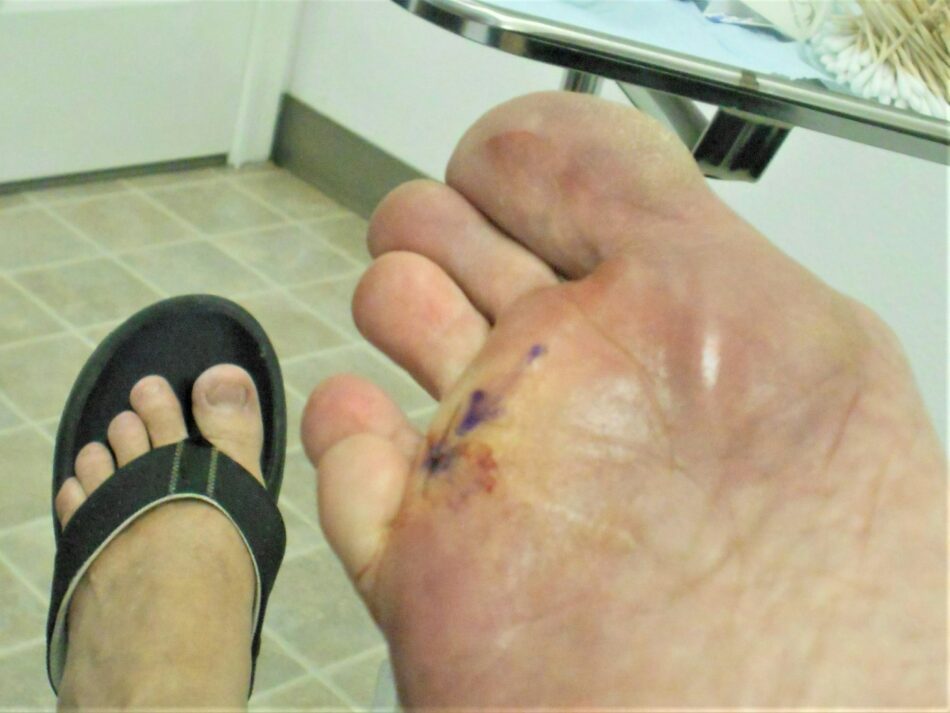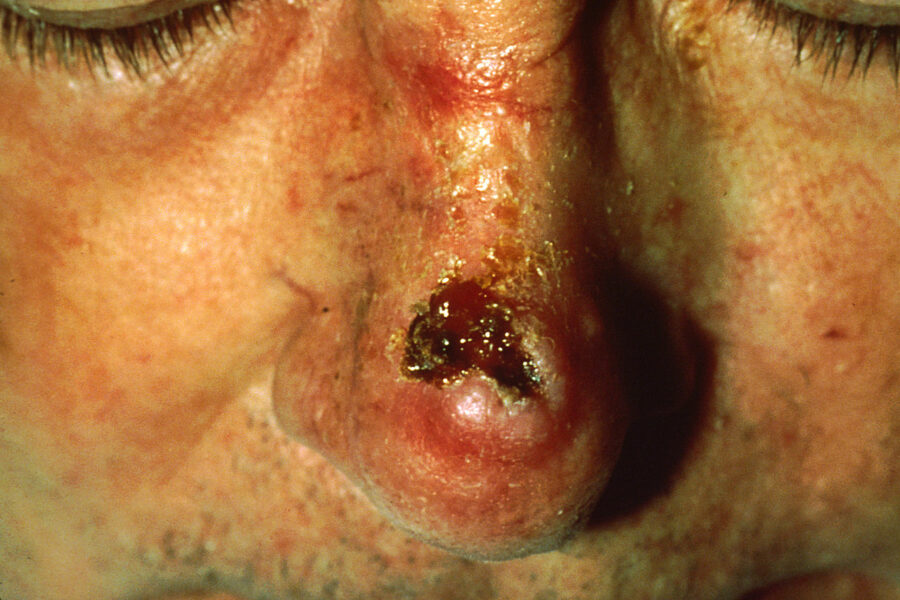
Squamous Cell Carcinoma – Photo Source National Cancer Institute, commons image.
Worldwide, of all the cancers, melanoma is the most common
By Skip Clement
The sun’s damaging UV rays are cumulative. Even if you’ve spent your whole life outside without sun protection, you can still reduce your risk of skin cancer by taking preventative steps now.
Whether you’re a newborn, a teen, or an 80-year-old, the sun’s rays can harm your skin if not protected. This is why The Skin Cancer Foundation advises all individuals, regardless of age or skin tone, to take responsibility for their skin’s health by practicing sun care.
That hand rash that won’t go away could be a sign of a serious condition. The pimple on the side of the nose that won’t go away could be more than just a pimple. That weird-looking foot sore that won’t go away might be a symptom of a more serious problem. Don’t ignore these signs-they could be early indicators of skin cancer.
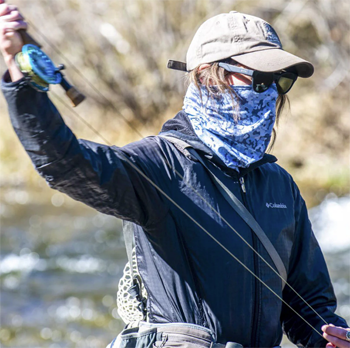
What is wrong here? Ditch the baseball cap [ears]. No gloves. Photo Murray’s Fly Shop Fishmasks Neck Gaiter.
True personal story
I picked away at a minor pimple on my cheek next to the left nostril. It kept getting bigger. Finally, it got too annoying, and a biopsy determined it was a basil cell (pre-cancer), and MOHS was recommended.
For basal cell carcinoma and squamous cell carcinoma, MOHS surgery is usually recommended. According to the Skin Cancer Foundation, the procedure is done in stages, all in one visit, while the patient waits between each stage. After removing a layer of tissue, the surgeon examines it under a microscope in an on-site lab. If any cancer cells remain, the surgeon knows the exact area where they are and removes another layer of tissue from that precise location while sparing as much healthy tissue as possible. The doctor repeats this process until no cancer cells remain.
It took several cutaways before being basil cell-free. The final hole in my face was nearly the size of a baseball – allowing a clear view of the facial bone. The incision went from part of my nose to just under the eye.
‘I see sun damage and skin cancers in people of all ethnicities, backgrounds, and skin colors. It is important to spread the message that it is not unique to fair-skinned individuals.’
— Angela Casey, M.D. (Healthline)
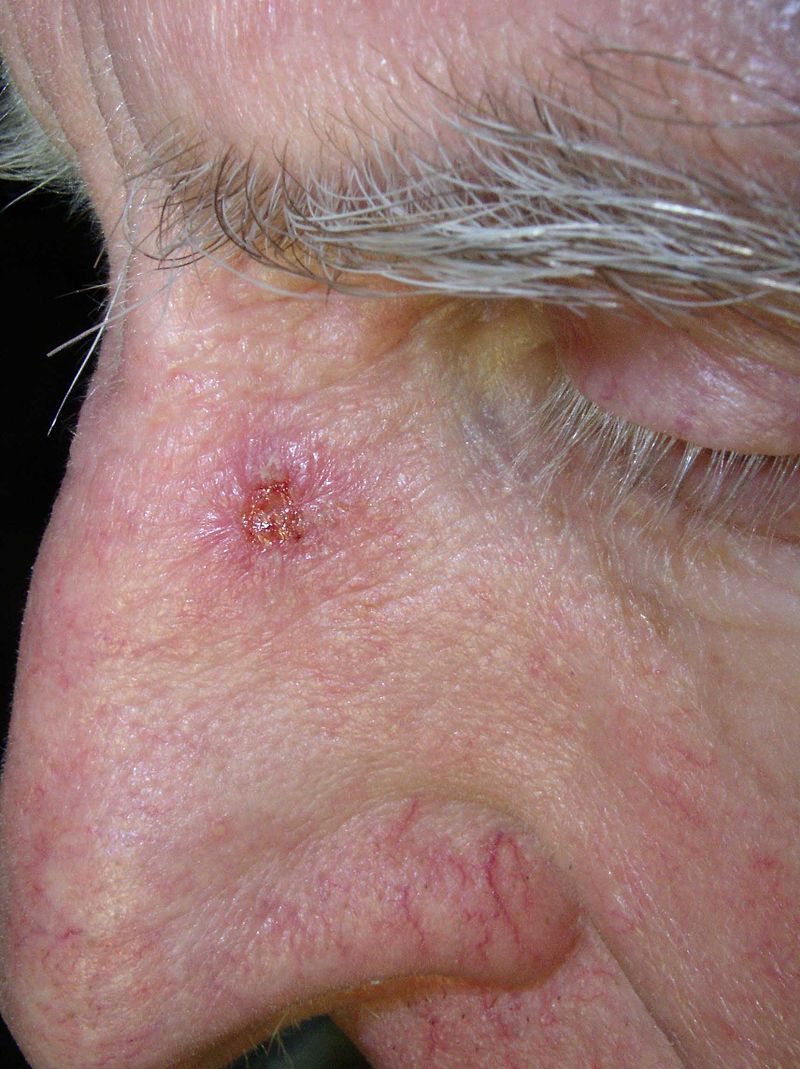
Photo credit Klaus D. Peter, Wiehl, Germany – commons image. Melanoma.
Apply sunscreen every two hours or less
Dermatologists recommend using sunscreen with an SPF of at least 30, which blocks 97% of the sun’s UVB rays. Higher-number SPFs block slightly more of the sun’s UVB rays, but no sunscreen can block 100% of the sun’s UVB rays.
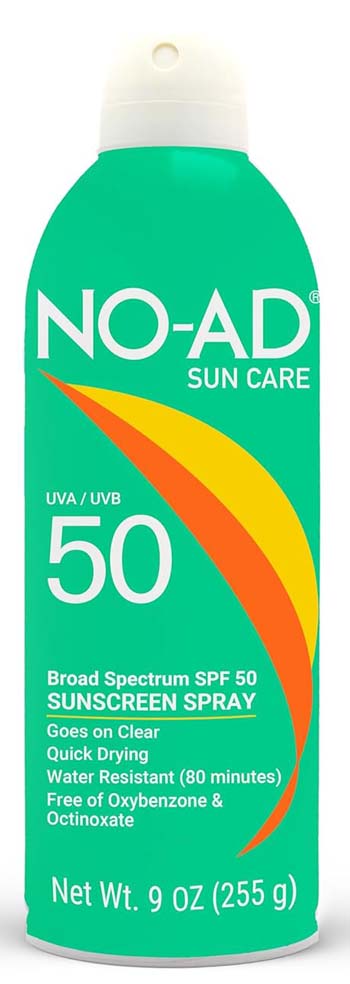 Summary
Summary
Clothing: Wear UV-protective clothing that covers a significant amount of skin with SPF 30 to 50 rating.
Gloves: Wear fingerless SPF 30 to 50-rated gloves.
Hats: Wear a broad-brim (3″) hat. Dump the baseball cap, especially if you wear it backward.
Sunglasses: Wear ones that offer 100% UV-ray protection – not junk from the gas station.
Neck gaiter: Always wear one.
Sunscreen: Liberally apply sunscreen with a high SPF rating to all exposed areas of skin. Reapply regularly—sunscreen loses performance as time passes.
Shade: Seek shade whenever possible, and remember that water, snow, and reflective surfaces can increase UV exposure.
Exposure time: Monitor and limit exposure to UV radiation, especially during peak daylight hours—roughly from 9 am to 3 pm.
Sun protection is not just for sunny days: Filtered sun can still damage skin, so protect yourself on cloudy days, too.
NOTE:
• Clothing that relies on finishes for its UPF rating: Finishes can vary in durability. If a finish washes out, UPF diminishes. Check if the garment states its UPF rating suits a specific number of washes.
• Clothing that relies on inherent fabric properties for its UPF rating: UPF should remain relatively unchanged as a result of washing—until it diminishes because the fabric becomes worn or faded
NOTE 2: The featured image is of a woman with a melanoma on her foot – Envato . . .


